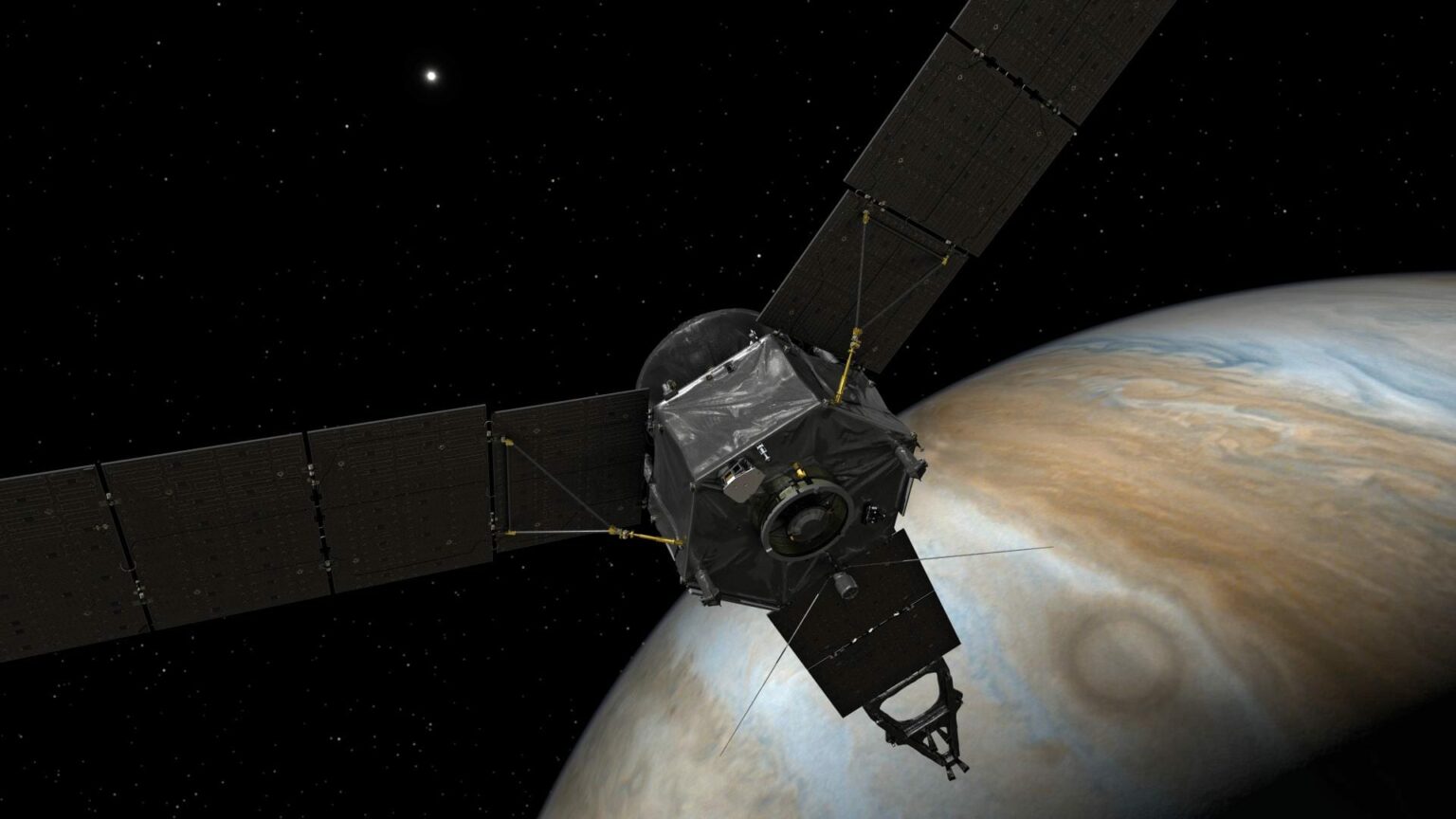The Juno suffered a memory failure in the on-board computer. This is stated in a message published on the website of NASA’s Jet Propulsion Laboratory (JPL).

On December 14, Juno passed the perihelion of its orbit (the closest point of its orbit to Jupiter) in the 47th. The device also made a fairly close flyby of Io. This Jupiterian moon is famous for its continuous volcanic activity. Constant eruptions regularly reshape its surface.
After performing the flyby, Juno started transmitting the collected data to Earth and suffered a failure. The problem was the inability to access the on-board memory. According to researchers, it was caused by the influence of the most powerful radiation belts of Jupiter. For radiation protection purposes, all of Juno’s electronics are housed in a special 181-kilogram titanium enclosure. But part of the radiation still manages to break through the protection, which can lead to various negative effects.
To fix the problem, mission controllers put the craft into safe mode and rebooted its computer. According to a JPL statement, this helped restore memory access. Juno has resumed data transmission. It is expected to be completed next week.
It is worth noting that the entire year 2023 will pass for Juno under the sign of Io. The device is expected to make nine approaches to the volcanic moon. The distance between them will be less than 1,500 km.
Based on materials from https://www.jpl.nasa.gov
